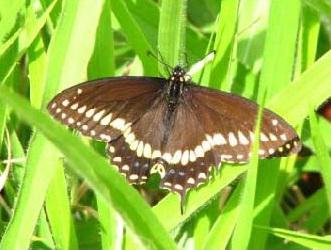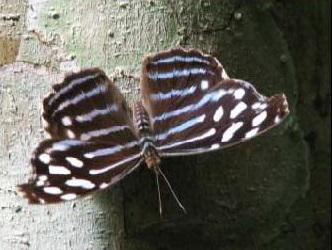Diego Tobar
This project aims to improve our understanding of how farmers can manage silvopastoral systems to better conserve butterfly biodiversity in pasture dominated landscapes.

In Central America, a landscape that less than 40 years ago was continuously forest, nearly 40% of the total land mass has been converted to pasture. More than 50% of these pastures are estimated to be degraded or are being degraded (Szott et al. 2000).

Although highly deforested and fragmented, many of the pasture-dominated landscapes still retain some on-farm tree cover, in the form of small (and often isolated) forest fragments, strips of riparian forest, dispersed trees in pastures and/or live fences. This on-farm tree cover is important for both farm productivity (providing shade and forage for cattle, while providing timber and firewood to farmers), and for biodiversity conservation (serving as habitats, as stepping stones, and resources for plant and animal species; Bennet 2003, Harvey et al. 2006), enhance landscape connectivity and aesthetics, provide environmental services as carbon sequestration, protect watersheds and conserve biodiversity.
Recent studies have demonstrated that silvopastoral systems (incorporating and integrating trees into cattle production systems) can significantly increase the sustainability of these systems by increasing productivity, and improving their conservation value. This on-farm tree cover is important for both farm productivity (providing shade and forage for cattle, while providing timber and firewood to farmers) and for conservation particularly as intact forests and natural areas become smaller and more fragmented. For example, recent studies have shown that SPS, including live fences, trees in pasture, riparian forests, and forest fragments, all contribute to the retention of moderate to high levels of native biodiversity. However, the specific type, extent, and spatial configuration of silvopastoral systems needed to support such diversity, particularly critical levels of connectivity, remain poorly understood.
In this study, we will make a contribution both to the scientific understanding of each study region’s butterfly fauna and, more broadly, to the conservation and management of animal diversity at landscape scales. We propose butterflies as the focal group of our work because they are widely recognized as a useful indicator group and because they are sensitive to environmental heterogeneity at the scale of tens to hundreds of meters—the same scale at which small farmers make management decisions. In addition, butterflies are an ideal group to analysis the species distribution patters in agricultural landscape because they are easy to capture and identify. Key impacts include:
- Improving the knowledge base about butterfly diversity, distribution, ecology, and natural history in two landscapes where it is currently poorly known. This information can be used to understand the role of butterflies in performing key ecological services (such as pollination) in agricultural landscapes;
- Since butterflies are a commonly-used indicator species, this study will help reveal how butterfly sampling can be used to monitor the effects of agricultural management practices on native plant and animal diversity;
- Identification of agricultural land uses that support rich butterfly assemblages can be used to inform policies and incentives for conservation-friendly agricultural management.